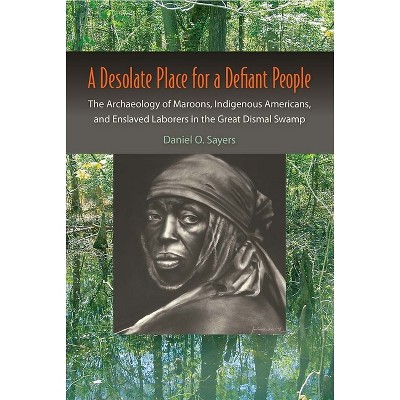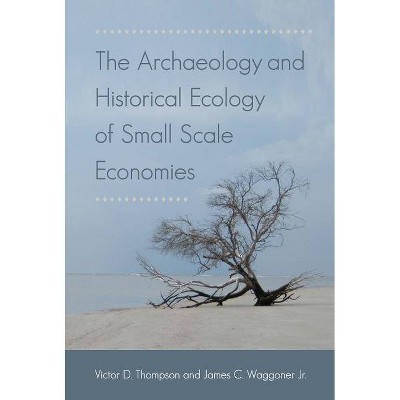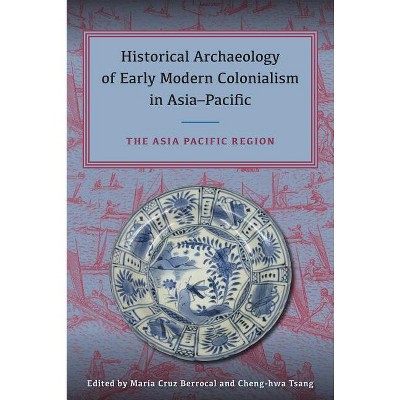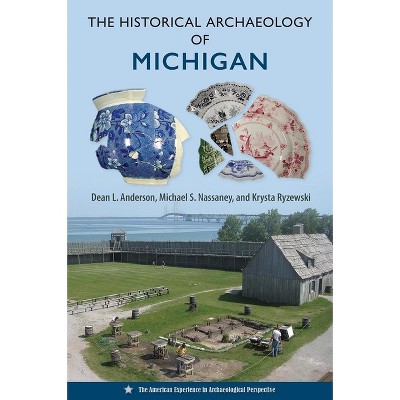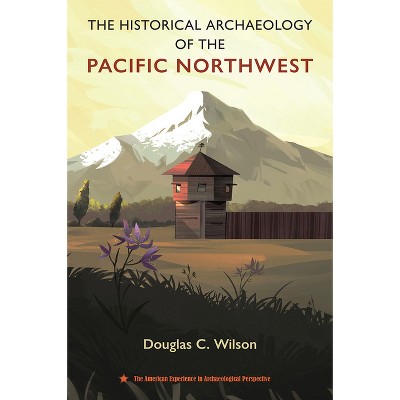Sponsored

The Seneca Restoration, 1715-1754 - (Co-Published with the Society for Historical Archaeology) by Kurt A Jordan (Paperback)
$31.49Save $1.46 (4% off)
In Stock
Eligible for registries and wish lists
Sponsored
About this item
Highlights
- "Elegantly demolishes the prevailing scholarly view that Seneca culture suffered gradual decline during the eighteenth century.
- About the Author: Kurt A. Jordan is assistant professor of anthropology at Cornell University.
- 448 Pages
- Social Science, Archaeology
- Series Name: Co-Published with the Society for Historical Archaeology
Description
About the Book
By combining archaeological data grounded in the material culture of the Seneca Townley-Read site with historical documents, Jordan answers larger questions about the Seneca's cultural sustainability and durability in an era of intense colonial pressures. He offers a detailed reconstruction of daily life in the Seneca community and demonstrates that they were extremely selective about which aspects of European material culture, plant and animal species, and lifeways they allowed into their territory.Book Synopsis
"Elegantly demolishes the prevailing scholarly view that Seneca culture suffered gradual decline during the eighteenth century. Jordan has combined archaeology and history to provide us with a new and compelling picture of the Seneca."--William Engelbrecht, Buffalo State College "Jordan's archaeological approach to eighteenth-century Native American settlement patterns is original and creative. It sets a promising new standard for interdisciplinary investigations of the potential complexity underlying domestic and settlement choices."--Martha L. Sempowski, Rochester Museum and Science Center and Seneca Archaeology Research Project The Iroquois confederacy, one of the most influential Native American polities encountered by early European settlers, is commonly perceived as having plunged into steep decline in the late seventeenth century due to colonial encroachment into the Great Lakes region. Kurt Jordan challenges long-standing interpretations that depict the Iroquois as defeated, colonized peoples by demonstrating that an important nation of that confederacy, the Senecas, maintained an impressive political and economic autonomy and resisted colonialism with a high degree of success. Following the 1700-1701 treaties with the English, French, and western Indian groups that ended the Twenty Years' War, the Seneca commitment to neutrality was tested by western Indian attacks on their territory. French and English agents were frequent visitors to Seneca country, encouraging factional competition. This period also witnessed the opening of Iroquois territory to western Indian groups who wanted to trade with the English at Albany, and the formation of alliances between Senecas and western groups that made transit across Seneca territory possible. In the midst of these pressures, the Seneca maintained an impressive level of political and economic autonomy with a high degree of success. Using historical and archaeological analysis, Kurt A. Jordan interrogates the concept of colonialism by demonstrating that the Seneca Iroquois (a member of the Six Nations Iroquois, or Haudenosaunee, confederacy) were entangled with, but not dominated by, Europeans during the first half of the eighteenth century. Even two hundred years after their initial engagement with Europeans, Senecas were extremely selective about which aspects of European material culture, plant and animal species, and lifeways they allowed into their territory. Centering his analysis on the Townley-Read archaeological site near Geneva, New York, Jordan uses artifactual, faunal, botanical, textual, and spatial evidence to assess Seneca community structure, housing, subsistence practices, alliance and trade relations during the first half of the eighteenth century. He demonstrates that Seneca construction of dispersed communities during this period was an opportunistic innovation with a myriad of economic and ecological benefits; that house forms used by Iroquois exhibited much less European "influence" than scholars usually assert; and that the fur trade economy of western Iroquois Nations remained viable at least through the mid-eighteenth century. These findings refute long-standing scholarly interpretations of eighteenth-century Iroquois political and economic development, which primarily have been based on documents written by colonial officials seeking to control Iroquois actions. By incorporating archaeological data and reassessing historical documents in light of new archaeological evidence, Jordan gives conclusive and solid support for a positive interpretation of the state of Seneca society in the first half of the eighteenth century and vividly depicts the local developments that made the "Seneca Restoration" possible.Review Quotes
"This outstanding study is based on the author's archaeological analysis of the Senecas' Townley-Read site near Geneva, New York, as well as his thorough examination of the literature on the late-seventeenth- and eighteenth-century Iroquois. Anthropologist Jordan challenges numerous scholars, including Daniel Richter, who have maintained that the Senecas and other Iroquois were in decline by the early eighteenth century. . . . Essential."--Choice
"Fascinating, compelling, and illuminating. . . . Weaves together the major source materials of ethnohistorical scholarship--archaeological, ethnographical, and historical--in ways that are consistently persuasive and revealing."--Reviews in American History "Quite eloquently challenges the tropes of decline in accepted Iroquois scholarship. . . . By using archaeological methodologies and a new evaluation of documentary source material, combined with a critical analysis of modern scholarship, Jordan produces new critical interpretations that cause the reader and observer of the Haudenosaunee to step back and engage the much larger picture being presented."--American Indian Culture and Research Journal
"Provides a long overdue and thorough reinterpretation of eighteenth-century Iroquoian history. [Jordan] successfully situates the Iroquois as active agents in directing their own destiny, and he drives home the point that scholars cannot take a single Iroquois tribe and use it as a model for what happened throughout Iroquoia during the colonial period."--Historical Archaeology
"I became thoroughly convinced by Jordan's argument that labor relations analysis explains many of the 'cultural' changes evident in the archaeological and ethnohistorical records."--Ethnohistory
About the Author
Kurt A. Jordan is assistant professor of anthropology at Cornell University.Dimensions (Overall): 9.21 Inches (H) x 6.14 Inches (W) x .89 Inches (D)
Weight: 1.35 Pounds
Suggested Age: 22 Years and Up
Number of Pages: 448
Genre: Social Science
Sub-Genre: Archaeology
Series Title: Co-Published with the Society for Historical Archaeology
Publisher: University Press of Florida
Format: Paperback
Author: Kurt A Jordan
Language: English
Street Date: February 10, 2011
TCIN: 1004471867
UPC: 9780813036854
Item Number (DPCI): 247-42-3172
Origin: Made in the USA or Imported
If the item details aren’t accurate or complete, we want to know about it.
Shipping details
Estimated ship dimensions: 0.89 inches length x 6.14 inches width x 9.21 inches height
Estimated ship weight: 1.35 pounds
We regret that this item cannot be shipped to PO Boxes.
This item cannot be shipped to the following locations: American Samoa (see also separate entry under AS), Guam (see also separate entry under GU), Northern Mariana Islands, Puerto Rico (see also separate entry under PR), United States Minor Outlying Islands, Virgin Islands, U.S., APO/FPO
Return details
This item can be returned to any Target store or Target.com.
This item must be returned within 90 days of the date it was purchased in store, shipped, delivered by a Shipt shopper, or made ready for pickup.
See the return policy for complete information.






